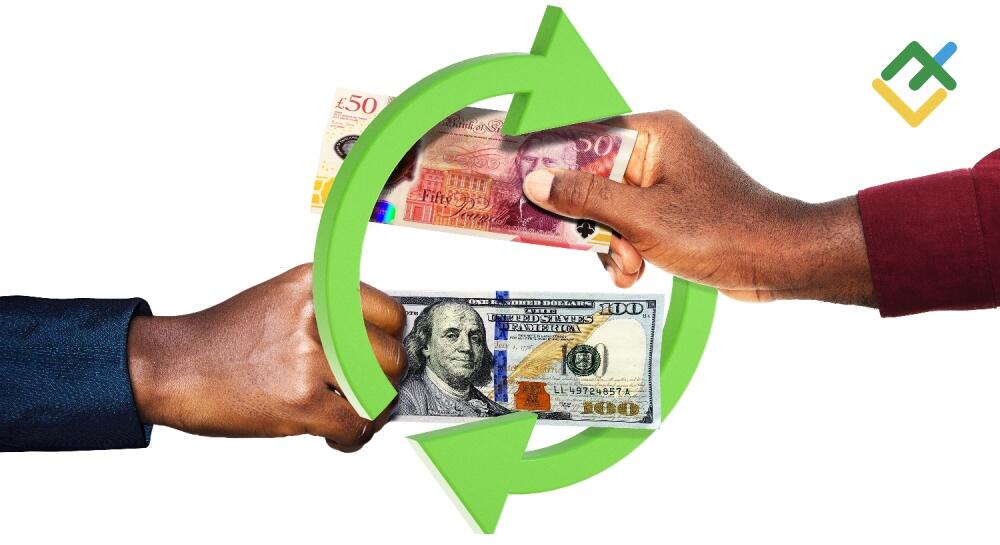
The rapid rise of GBP/USD was driven by investor confidence that the United States would be the main country hit by tariffs. However, sell-offs in European equity markets brought the pound back to its starting point. Let’s discuss it and make a trading plan.
The article covers the following subjects:
Major Takeaways
- Britain faces a 10% tariff, the lowest among major economies.
- The Bank of England will cut rates more slowly than the Federal Reserve.
- The FTSE 100’s decline triggered a pound sterling collapse.
- GBPUSD’s failure to break above 1.3025 is a signal to sell.
Weekly Fundamental Forecast for Pound Sterling
The last shall become first! The White House’s tariffs shocked financial markets, and the turbulence continues. Logically, the tougher Donald Trump acts toward a country, the more its currency should weaken. Yet, the yuan and yen have strengthened against the U.S. dollar, even though China and Japan were among the hardest hit by U.S. import tariffs — 34% for China and 24% for Japan. In contrast, Britain’s 10% tariff seems minor, but GBP/USD has lost all its initial edge.
The U.S. is the largest market for British goods, and even though its tariffs are low compared to others, they will hurt the UK economy. London isn’t planning retaliation — Chancellor Rachel Reeves believes it’s better to wait and see how others respond. Keir Starmer’s government is betting on negotiations, especially since Donald Trump hasn’t ruled out canceling tariffs if the U.S. gets a “phenomenal” deal.
UK Foreign Trade Dynamics and Structure
Source: Bloomberg.
The pound initially benefited from the White House tariff announcement as investors assumed the U.S. would suffer most. American stocks were expected to sell off faster than others, and the Fed would need to cut rates aggressively to shield the U.S. economy from recession. Derivatives now expect Jerome Powell’s team to cut borrowing costs by 100 basis points in 2025, up from 75 basis points before America’s “Liberation Day.”
Meanwhile, the futures market predicts the Bank of England’s repo rate will drop to 3.25% — a three-quarter-point cut — which should, in theory, support GBP/USD. But in today’s world of protectionism and trade wars, currency pair movements depend on broader asset dynamics.
The pound’s surge against the dollar to its highest since early October stemmed from fears of a massive S&P 500 drop. That happened — the broad equity index saw its worst daily plunge since the pandemic—but then European stocks took a hit.
FTSE 100 Weekly Performance
Source: Bloomberg.
British companies that trade actively with China, like Standard Chartered and HSBC, came under pressure. Other banks, such as Barclays and NatWest, also fell amid economic fears and concerns over aggressive monetary easing by the Bank of England. As a result, the FTSE 100 is on track for its worst weekly performance since 2023, putting pressure on the pound.
Weekly Trading Plan for GBPUSD
Sterling is a pro-cyclical currency — it can’t ignore worsening global economic prospects. Long positions on GB/PUSD opened from 1.2965 paid off well, but it’s time to reassess the situation. If the pair fails to climb back above 1.3025 in the coming days, it’s time to sell it.
This forecast is based on the analysis of fundamental factors, including official statements from financial institutions and regulators, various geopolitical and economic developments, and statistical data. Historical market data are also considered.
Price chart of GBPUSD in real time mode
The content of this article reflects the author’s opinion and does not necessarily reflect the official position of LiteFinance broker. The material published on this page is provided for informational purposes only and should not be considered as the provision of investment advice for the purposes of Directive 2014/65/EU.
According to copyright law, this article is considered intellectual property, which includes a prohibition on copying and distributing it without consent.




